- KOMPAS MAGNET DAN GYRO COMPASSBAB 1 DASAR HUKUM DAN PENGERTIAN PEDOMAN SECARA UMUM
- UU NO 17 2008UNDANG UNDANG NO 17 TAHUN 2008 BAB XVI PERAN SERTA MASYARAKAT
- MARITIME ENGLISHSMCP MARINE COMMUNICATION PHRASA FOR HELICOPTER OPERATIONS
- SOLAS 74SOLAS Chapter X & XI-1 Safety measures for high-speed craft
- P2TLP2TL BAGIAN C PENERANGAN DAN SOSOK BENDA
ANNEX:
Chapter I General Provisions
Chapter II-1 Construction –
Subdivision and Stability, Machinery and Electrical Installations
Chapter II-2 Construction – Fire
Protection, Fire Detection and Fire Extinction
Chapter III Life-Saving Appliances,
etc.
Chapter IV Radiotelegraphy and
Radiotelephony
Chapter V Safety of Navigation
Chapter VI Carriage of Grain
Chapter VII Carriage of Dangerous
Goods
Chapter VIII Nuclear Ships
Appendix
Certificates
Chapter
I General Provisions
Definitions
For the purpose of the
present Regulations, unless expressly provided otherwise:
(a)
“Regulations” means the Regulations contained in the Annex to the
present Convention.
(b)
“Administration” means the Government of the State whose flag the ship
is entitled to fly.
(c) “Approved”
means approved by the Administration.
(d) “International
voyage” means a voyage from a country to which the present Convention
applies
to a port outside such
country, or conversely.
(e) A passenger is every
person other than:
(i) the master and the
members of the crew or other persons employed or engaged in any capacity
on board a ship on the
business of that ship; and
(ii) a child under one
year of age.
(f) A passenger ship is a
ship which carries more than twelve passengers.
(g) A cargo ship is any
ship which is not a passenger ship.
(h) A tanker is a cargo
ship constructed or adapted for the carriage in bulk of liquid cargoes of an
inflammable[5] nature.
(i) A fishing vessel is a
vessel used for catching fish, whales, seals, walrus or other living resources
of the sea.
(j) A nuclear ship is a
ship provided with a nuclear power plant.
(k) “New ship”
means a ship the keel of which is laid or which is at a similar stage of
construction
on or after the date of
coming into force of the present Convention.
(l) “Existing
ship” means a ship which is not a new ship.
(m) A
mile is 1,852 metres or 6,080 feet.
CHAPTER II-1 CONSTRUCTION –
SUBDIVISION AND STABILITY, MACHINERY AND ELECTRICAL INSTALLATIONS
Definitions
For the purpose of this Chapter,
unless expressly provided
otherwise:
(i) A subdivision load line is a water-line used in determining the subdivision of the ship.
(ii) The deepest
subdivision load line is the water-line which corresponds to the greatest
draught permitted by the subdivision requirements which are applicable.
(a)
The length of the ship is the length measured between
perpendiculars taken at the extremities of
the deepest subdivision load line.
(b)
The breadth of the ship is the extreme width from
outside of frame to outside of frame at or
below the deepest subdivision load line.
(c)
The draught is the vertical distance from the moulded
base line amidships to the subdivision load line in question.
(d)
The bulkhead deck is the uppermost deck up to which
the transverse watertight bulkheads are carried.
(e)
The margin line is a line drawn at
least 76 millimetres (3 inches) below the upper surface of the bulkhead
deck at side.
(f)
The permeability of a space is the percentage of that space which can be occupied
by water. The volume of a space which extends
above the margin
line shall be measured only to the height of that line.
(g)
The machinery space is to be taken as extending from
the moulded base line to the margin line and
between the extreme main transverse watertight bulkheads bounding the spaces
containing the main and auxiliary
propelling machinery, boilers serving the needs of propulsion, and all
permanent coal bunkers.
In the case of
unusual arrangements, the Administration may define the limits of the machinery spaces.
(h)
Passenger spaces are those which are provided
for the accommodation and use of passengers, excluding baggage,
store, provision and mail
rooms.
For the purposes of
Regulations 4 and 5 of this Chapter, spaces provided below the margin line for the accommodation and use of the crew shall
be regarded as passenger spaces.
(i)
In all cases volumes and areas shall be calculated to moulded lines.
CHAPTER II-2 CONSTRUCTION – FIRE PROTECTION, FIRE DETECTION AND FIRE EXTINCTION
Definitions
For the purpose of this Chapter,
unless expressly provided
otherwise:
(a) “Non-combustible
material” means a material which neither burns nor gives off inflammable vapours
in sufficient quantity
for self-ignition when heated to approximately 750deg.C
(1,382deg.F)
this being
determined to the satisfaction of the Administration by an established test
procedure.[15] Any other material is a combustible material.
(b)
“A Standard Fire Test” is one in which
specimens of the relevant bulkheads or decks are exposed in a test furnace to temperatures corresponding
approximately to the standard time- temperature
curve. The specimen shall have an exposed surface of not less than 4.65 square
metres (50 square feet) and height
(or length of deck) of 2.44 metres (8 feet) resembling as closely as possible the intended construction and
including where appropriate at least one joint. The standard time-temperature curve is defined by a smooth curve drawn through the following points:
at the end of the first 5 minutes – 538deg.C (1 ,000deg.F) at the end of the first 10 minutes –
704deg.C (1,300deg.F) at the end of
the first 30 minutes – 843deg.C (1,550deg.F)
at the end of the first 60 minutes – 927deg.C (1,700deg.F)
(c) “”A” Class Division” are those divisions
formed by bulkheads
and decks which comply with the following:
(i) they shall be constructed of steel or other equivalent material;
(ii)
they shall
be suitably stiffened;
(iii) they shall be
so constructed as to be capable of preventing the passage of smoke and flame to the end of the one-hour standard
fire test;
(iv) they shall
be insulated with approved non-combustible materials such that the average temperature of the unexposed side will not
rise more than 139deg.C (250deg.F) above the original temperature, nor will the temperature, at any one point,
including any joint, rise more than 180deg.C (325deg.F) above the original
temperature, within the time listed
below:
Class “A-60” 60 minutes Class “A-30” 30
minutes Class “A-15” 15 minutes Class “A-0” 0 minutes
(v)
the Administration may require a test of a prototype bulkhead
or deck to ensure that it meets the
above requirements for integrity
and temperature rise.[16]
(d)
“”B” Class Divisions” are those
divisions formed by bulkheads, decks, ceilings or linings which comply
with the following:
(i) they shall
be so constructed as to be capable of preventing the passage of flame to the
end of the first one-half
hour of the standard fire test;
(ii)
they shall have an insulation value such that the
average temperature of the unexposed side will
not rise more than 139deg.C (250deg.F) above the original temperature,
nor will the temperature at any one
point, including any joint, rise more than 225deg.C (405deg.F) above the
original temperature, within the time listed below:
Class “B-15” 15 minutes
Class “B-0” 0
minutes
(iii) they shall be constructed of approved non-combustible materials and all materials entering
into
the
construction and erection of “B” Class divisions shall be non-combustible,
except where in accordance with Parts
C and D of this Chapter the use of combustible material is not precluded, in which case it shall comply with the
temperature rise limitation specified in sub-paragraph (ii) of this paragraph up to the end of the first one-half hour of the standard fire test;
(iv) the
Administration may require a test of a prototype division to ensure that it
meets the above requirements for integrity and temperature rise.[17]
(e) “”C” Class Divisions” shall be constructed of approved non-combustible materials. They need
meet no requirements relative to the passage of smoke and flame nor the
limiting of temperature rise.
(f) “Continuous “B” Class Ceilings or Linings” are those “B” Class ceilings or linings which
terminate only at an “A”
or “B” Class division.
(g)
“Steel or Other Equivalent Material”. Where
the words “steel or other equivalent material” occur, “equivalent material” means any material which,
by itself or due to insulation provided, has
structural and integrity properties equivalent to steel at the end of
the applicable fire exposure to the standard fire test
(e.g. aluminium allow with
appropriate insulation).
(h)
“Low Flame Spread” means that the surface
thus described will adequately restrict the spread of flame, this being determined to the satisfaction of the
Administration by an established test procedure.
(i) “Main
Vertical Zones” are those sections into which the hull, superstructure,
and deckhouses are divided by
“A” Class divisions, the mean length of which on any one deck does
not in general exceed 40 metres (131 feet).
(j) “Accommodation
Spaces” are those used for public spaces, corridors, lavatories, cabins,
offices, crew quarters, barber shops, isolated
pantries and lockers and similar spaces.
(k)
“Public Spaces” are those portions of the
accommodation which are used for halls, dining
rooms, lounges and similar permanently enclosed spaces.
(l) “Service
Spaces” are those used for galleys, main pantries, stores (except isolated
pantries and lockers), mail and specie
rooms, workshops other than those forming part of machinery spaces, and similar
spaces and trunks
to such spaces.
(m) “Cargo
Spaces” are all spaces used for cargo (including cargo oil tanks) and
trunks to such spaces.

(n)
“Special Category
Spaces” are those enclosed spaces above or below the bulkhead deck intended
for the carriage of motor vehicles with fuel in their tanks for their own
propulsion, into and from which such vehicles
can be driven and to which passengers have access.
(o)
“Machinery Spaces of Category A”
are all spaces
which contain:
(i) internal
combustion type machinery used either for main propulsion purposes, or for
other purposes where such machinery
has in the aggregate a total power output of not less than 373 kW, or
(ii)
any oil-fired boiler
or oil fuel unit; and trunks to such spaces.
(p)
“Machinery Spaces” are all machinery spaces
of Category A and all other spaces containing
propelling machinery, boilers,
oil fuel units, steam and internal combustion engines, generators and major electrical machinery, oil filling
stations, refrigerating, stabilizing, ventilation and air conditioning machinery, and similar
spaces; and trunks
to such spaces.
(q)
“Oil Fuel Unit” means the equipment used for
the preparation of oil fuel for delivery to an oil- fired boiler, or equipment used for the preparation for
delivery of heated oil to an internal combustion
engine, and includes any oil pressure pumps, filters and heaters dealing with
oil at a pressure more than 1.8 kilogrammes per square centimetre (25 pounds per square inch)
gauge.
(r) “Control
Stations” are those spaces in which the ship’s radio or main navigating
equipment or the emergency source of
power is located or where the fire recording or fire control equipment is centralized.
(s) “Rooms
containing Furniture and Furnishings of Restricted Fire Risk” are, for the
purpose of Regulation 20 of this Chapter, those rooms containing furniture and furnishings of restricted fire
risk (whether cabins,
public spaces, offices
or other types of accommodation) in which:
(i) all case
furniture such as desks, wardrobes, dressing tables, bureaux, dressers, is
constructed entirely of approved
non-combustible materials, except that a combustible veneer not exceeding 2 millimetres (1/12 inch) may be used on the working surface
of such articles;
(ii)
all free-standing furniture such as chairs, sofas,
tables, is constructed with frames of non- combustible materials;
(iii) all
draperies, curtains and other suspended textile materials have, to the
satisfaction of the Administration, qualities of resistance to the propagation of flame not inferior to those of wool weighing
0.8 kilogrammes per square metre (24 ounces per square yard);
(iv) all floor
coverings have, to the satisfaction of the Administration, qualities of resistance
to the propagation of flame not
inferior to those of an equivalent woollen material used for the same purpose;
and
(v)
all exposed surfaces
of bulkheads, linings
and ceilings have low flame-spread characteristics.
(t) “Bulkhead
deck” is the uppermost deck up to which the transverse watertight
bulkheads are carried.
(u)
“Deadweight” is the difference in metric
tons between the displacement of a ship in water of a specific gravity of 1.025 at the load water line corresponding
to the assigned summer freeboard and the lightweight of the ship.
(v)
“Lightweight” is the displacement of a ship
in metric tons without cargo, fuel, lubricating oil, ballast water, fresh water and feedwater in tanks, consumable
stores, together with passengers, and crew
and their effects.
(w) “Combination carrier” is a tanker
designed to carry oil or alternatively solid cargoes in bulk.
CHAPTER III LIFE-SAVING APPLIANCES, ETC.
Definitions
For the purpose of this Chapter:
(a)
“Short international
voyage” means an international voyage in the course of which a ship is not more than 200 miles from a port or place
in which the passengers and crew could be placed in safety, and which does not exceed 600 miles in length between
the last port of call in the country in which the voyage begins and the final
port of destination.
(b)
“Liferaft” means
a liferaft complying
with either Regulation 15 or Regulation 16 of this Chapter.
(c)
“Approved launching
device” means a device approved by the Administration, capable of launching from the embarkation position a
liferaft fully loaded with the number of persons it is permitted to carry and with its equipment.
(d)
“Certificated lifeboatman”
means any member of the crew who holds a certificate of efficiency issued
under the provisions of Regulation 32 of this Chapter.
(e) “Buoyant apparatus” means flotation equipment (other than
lifeboats, liferafts, lifebuoys and life-jackets)
designed to support a specified number of persons who are in the water and of
such construction that it retains its shape and properties.
CHAPTER IV RADIOTELEGRAPHY AND RADIOTELEPHONY
Terms and definitions
For the purpose of this Chapter the following terms shall have the
meanings defined below. All other
terms which are used in this Chapter and which are also defined in the Radio
Regulations shall have the same meanings
as defined in those Regulations:
(a) “Radio
Regulations” means the Radio Regulations annexed to, or regarded as being
annexed to, the most recent International Telecommunication Convention
which may be in force
at any time.
(b)
“Radiotelegraph auto alarm” means an
automatic alarm receiving apparatus which responds to the radiotelegraph alarm signal and has been approved.
(c) “Radiotelephone
auto alarm” means an automatic alarm receiving apparatus which responds to the radiotelephone alarm signal and has been approved.
(d)
“Radiotelephone
station”, “Radiotelephone installation” and “Watches – radiotelephone” shall be considered as relating to the medium
frequency band, unless
expressly provided otherwise.
(e) “Radio Officer” means a person
holding at least a first or second
class radiotelegraph operator’s certificate, or a radiocommunication operator’s general
certificate for the maritime mobile service,
complying with the provisions of the Radio Regulations, who is employed
in the radiotelegraph station of a
ship which is provided with such a station in compliance with the provisions of Regulation 3 or Regulation 4 of this
Chapter.
(f) “Radiotelephone
operator” means a person holding an appropriate certificate complying with
the provisions of the Radio Regulations.
(g)
“Existing installation” means:
(i) an
installation wholly installed on board a ship before the date on which the
present Convention enters into force irrespective
of the date on which acceptance by the respective Administration takes effect;
and
(ii)
an installation part of which was installed on board a
ship before the date of entry into force of
the present Convention and the rest of which consists either of parts
installed in replacement of identical parts, or parts which comply with
the requirements of this Chapter.
(h)
“New installation” means
any installation which is not an existing
installation.
CHAPTER VI CARRIAGE
OF GRAIN
Definitions
(a) The term “grain”
includes wheat, maize (corn), oats, rye, barley, rice, pulses, seeds and processed forms thereof, whose behaviour is similar to that of grain
in its natural state.
(b)
The term “filled compartment” refers to any
compartment in which, after loading and trimming as required under
Regulation 3, the bulk grain is at its highest possible level.
(c) The term
“partly filled compartment” refers to any compartment wherein bulk
grain is not loaded in the manner prescribed in paragraph (b) of this Regulation.
(d)
The term “angle of flooding” (f)
means an angle of heel at which openings in the hull, superstructures or deckhouses, which cannot be closed
weathertight, immerse. In applying this definition,
small openings through which progressive flooding cannot take place need not be considered as open.
CHAPTER
V SAFETY OF NAVIGATION
Regulation 1 Application
This Chapter, unless otherwise expressly provided in
this Chapter, applies to all ships on all voyages, except ships of war and
ships solely navigating the Great Lakes of North America and their connecting
and tributary waters as far east as the lower exit of the St. Lambert Lock at
Montreal in the Province of Quebec, Canada.
CHAPTER VI CARRIAGE
OF GRAIN
Definitions
(a)
The term “grain” includes
wheat, maize (corn), oats, rye, barley, rice, pulses, seeds and processed forms thereof, whose behaviour is similar to that of grain
in its natural state.
(b)
The term “filled
compartment” refers to any compartment in which, after loading and
trimming as required under Regulation 3, the bulk grain is at its highest
possible level.
(c)
The term “partly filled
compartment” refers to any compartment wherein bulk grain is not loaded
in the manner prescribed in paragraph (b) of this Regulation.
(d)
The term “angle of
flooding” (f) means an angle of heel at which openings in the
hull, superstructures or deckhouses,
which cannot be closed weathertight, immerse. In applying this definition, small openings through which
progressive flooding cannot take place need not be considered as open.
CHAPTER VII CARRIAGE OF DANGEROUS GOODS
Regulation 1 Application
(a)
Unless expressly provided otherwise,
this Chapter applies to the carriage of dangerous goods in all ships
to which the present Regulations
apply.
(b)
The provisions of this Chapter do
not apply to ship’s stores and equipment or to particular cargoes
carried in ships specially built or converted as a whole for that purpose, such as tankers.
(c)
The carriage of dangerous goods is
prohibited except in accordance with the provisions of this Chapter.
(d)
To supplement the provisions of this
Chapter each Contracting Government shall issue, or cause to be issued, detailed instructions on
the safe packing and stowage of specific dangerous goods or categories of dangerous goods which shall
include any precautions necessary in their relation to other cargo.
Regulation 2 Classification
Dangerous goods shall be divided into the following classes:
Class 1 – Explosives.
Class 2 – Gases:
compressed, liquefied or dissolved under pressure. Class
3 – Inflammable[38] liquids.
Class 4.1 – Inflammable solids.
Class 4.2 – Inflammable solids, or substances, liable to spontaneous combustion.
Class 4.3 –
Inflammable solids, or substances, which in contact with water emit inflammable
gases. Class 5.1 – Oxidizing substances.
Class 5.2 – Organic
peroxides.
Class 6.1 – Poisonous
(toxic) substances. Class
6.2 – Infectious substances.
Class 7 –
Radioactive substances. Class 8 – Corrosives.
Class 9 – Miscellaneous
dangerous substances, that is any other substance which experience has shown, or may show, to be of such a
dangerous character that the provisions of this Chapter should apply
to it.
CHAPTER
VIII NUCLEAR SHIPS
Regulation 1 Application
This Chapter applies to all nuclear ships except ships
of war.
Regulation 2 Application of other Chapters
The Regulations contained in the other Chapters of the
present Convention apply to nuclear ships except as modified by this Chapter.
Regulation 3 Exemptions
A nuclear ship shall not, in any circumstances, be
exempted from compliance with any Regulations of this Convention.
admin
13 Feb 2024
Chapter VIII Nuclear Ship Regulation 1 Application This chapterapplies to all nuclear ships except ships of war. Regulation 2 Application of other chapters The regulations contained inthe other chapters of the present Conventionapply to nuclear ships except as modified by this chapter.* Regulation 3 Exemptions A nuclearship shall not, in any circumstances, beexempted …
admin
13 Feb 2024
Regulation 1-1 Definitions For the purpose of this chapter, unless expressly provided otherwise, the following definitions shall apply: 1IMSBC Code means the International Maritime Solid Bulk Cargoes (IMSBC) Code adopted by theMaritime Safety Committee of Organization by resolution MSC.268(85), as may be amended by theOrganization, provided that such amendments are adopted, brought into force …
admin
13 Feb 2024
CHAPTER III Life-saving appliances and arrangements PART A-GENERAL Regulation 1 Application 1 Unless expressly provided otherwise, this chapter shall apply to ships the keels of which are laid or which are at a similar stage of construction on or after 1 July 1998. 2 For the purpose of this chapter the term a similar …
admin
13 Feb 2024
Chapter I General Definition : For the purpose of the present regulations, unless expressly providec otherwise: (a) Regulations means the regulations contained in the annex to the present Convention. (b) Administration means the Covernment of the State whose flag the ship is entitled to fly. (c) Approved means approved by the Administration. (d) lnternational voyage …
admin
26 Mar 2023
SOLAS 1974 CHAPTER XII ADDITIONAL SAFETY MEASURES FOR BULK CARRIERS I. Regulation 1 Definitions For the purpose of this chapter: 1 Bulk carrier means a ship which is intended primarily to carry dry cargo in bulk, including such types as ore carriers and combination carriers. (Kapal Curah berarti kapal yang tujuan …
admin
26 Mar 2023
SOLAS 1974 CHAPTER XI-2 SPECIAL MEASURES TO ENHANCE MARITIME SECURITY Regulation 1 Definitions 1. For the purpose of this chapter, unless expressly provided otherwise: 1. Bulk carrier means a bulk carrier as defined in regulation IX/1.6. “Bulk carrier means a bulk carrier as defined in regulation IX/1.6. ADFINES NORTH This …
13 Feb 2024 568 views
CHAPTER III Life-saving appliances and arrangements PART A-GENERAL Regulation 1 Application 1 Unless expressly provided otherwise, this chapter shall apply to ships the keels of which are laid or which are at a similar stage of construction on or after 1 July 1998. 2 For the purpose of this chapter the term a similar …
26 Mar 2023 171 views
SOLAS 1974 CHAPTER XI-2 SPECIAL MEASURES TO ENHANCE MARITIME SECURITY Regulation 1 Definitions 1. For the purpose of this chapter, unless expressly provided otherwise: 1. Bulk carrier means a bulk carrier as defined in regulation IX/1.6. “Bulk carrier means a bulk carrier as defined in regulation IX/1.6. ADFINES NORTH This …
22 Aug 2023 124 views
Beberapa Materi yang akan di uji dalam kaitannya dengan ujian negara untuk mendapatkan sertifikat Operator radio umum Mualim REOR diantaranya: Bahasa Inggris GMDSS Peraturan Radio Perjanjian Internasional Servis Dokumen Tekhnik Radio Telephony Radio Ujian Operator radio umum Mualim terdiri dari Ujian praktek dan teori Untuk ujian Praktek akan di selenggarakan oleh lembaga diklat dengan beberapa …
03 Feb 2024 93 views
Bagian ini akan menjadi sesi tanya jawab, menggunakan model, papan magnetik dan situasi real-time berbasis komputer atau simulator. Trainee harus sudah benar-benar memahami COLREGS dan aplikasinya, jadi sesi ini akan menjadi keperluan revisi dan konsolidasi. Jawaban “panggil Nakhoda” tentu saja tidak lagi tersedia bagi mereka. Perhatian peserta pelatihan harus diarahkan pada kasus tubrukan dan putusan …
11 May 2023 93 views
Berthing 1. General .1. Is/are the propeller(s) clear?.1.1. Yes, the propeller(s) is/are clear..1.2. No, the propeller(s) is/are not clear..1.3. Keep the propeller(s) clear. .2. Are fenders on the berth? .2.1. Yes, fenders are on the berth..2.2. No, fenders are not on the berth..3. Have fenders ready fore and aft. .2. Berthing.1. We will berth …
11 May 2023 92 views
What is “cargo plan”. When applied to a ships A discussion between the shore and ship to plan the procedure for loading cargo Notices to marine _________ carefully and regularly to avoid grounding Should be studied Wreck sand rock are not easily _________ by the signal Detected To help the preparations to leave the …






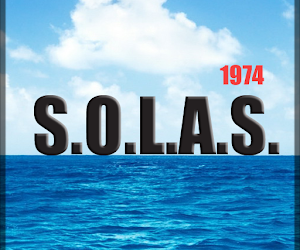


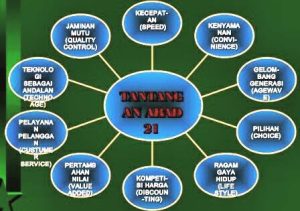
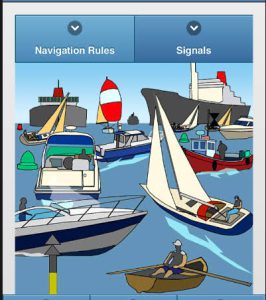
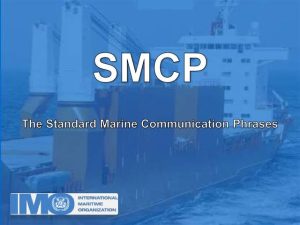
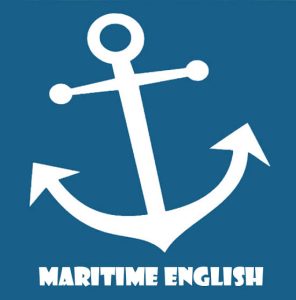

Comments are not available at the moment.